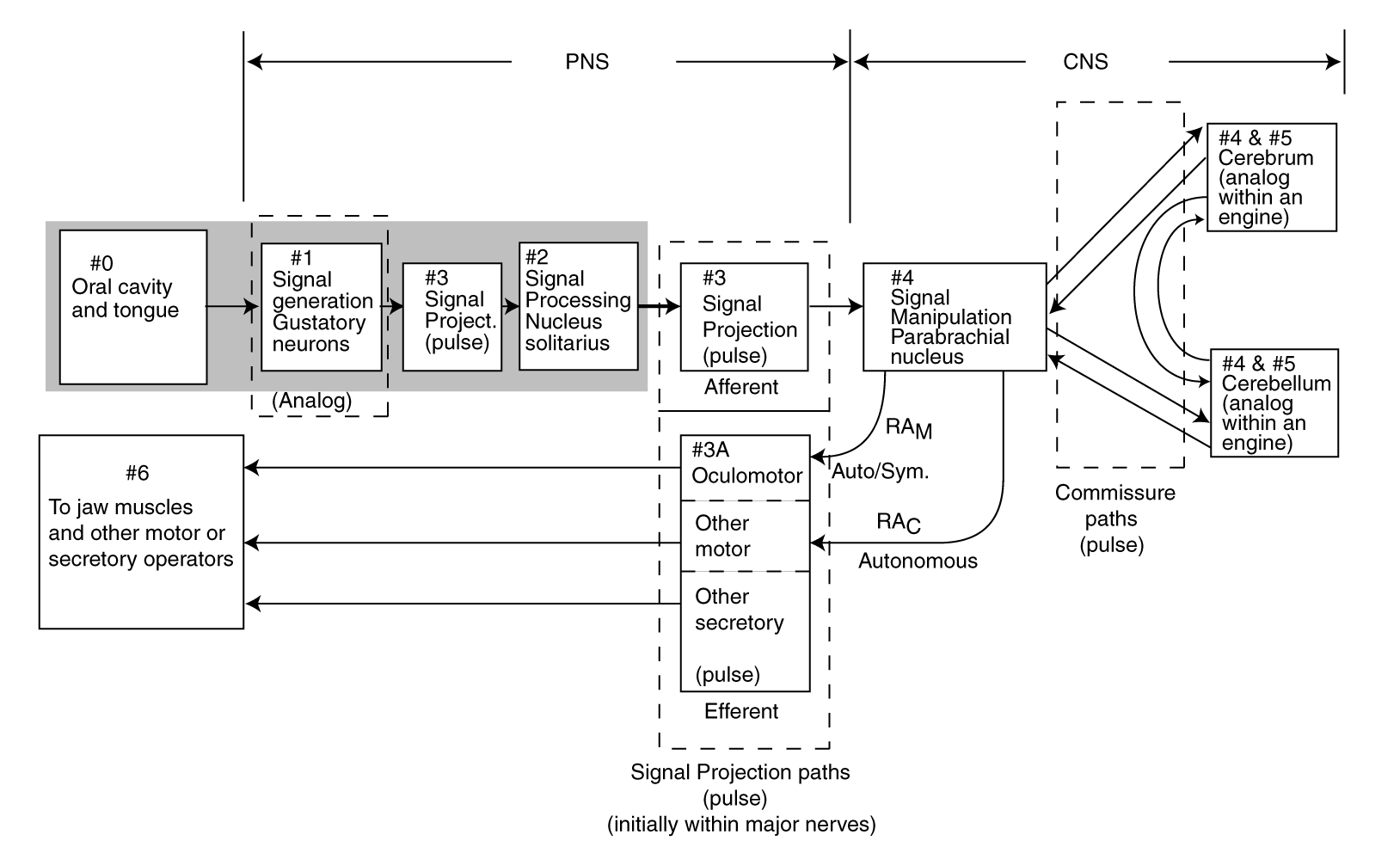

|
TOP BLOCK DIAGRAM OF GUSTATION (TASTE)
|
The block daigram of the gustatory modality follows the standard plan of all major sensory modalities. The primary difference is the character and operation of the sensory receptors of the sensory receptor neurons (stage 1). The block diagram of gustation at a more detailed level shows considerable similarity to that of the auditory modality.
The following material is expanded upon in Chapter 8, Sections 8.4 & 8.5, of "The Neuron and Neural System." available at the home web page of the Neuron and Neural System.
While the gustatory sensing and signal processing are frequently described as part of the CNS, this is less than precise. While stages 1 and 2 of the modality are present within the cranium they are functionally major portions of the peripheral nervous system (PNS), like the similarly positioned stages of hearing.
The following figure describes the overall operation of the gustatory modality in block diagram form.

At upper left, the initial stage (stage 0) of the modality is seen to consist of two input structures located within the oral cavity, the taste buds of the oral cavity wall and the taste buds of the tongue (both of which must be wetted by saliva to be effective. The stage 1 sensory neurons in the taste buds appear to connect directly to stage 3 projection neurons, the potential for some analog stage 2 signal processing within a taste bud remains.
The main gustatory channel, the tongue, is highly non-uniform in its coverage by taste buds of a specific sensory neuron composition. The signals originate primarily from stimulation by non-volatile but soluble organic molecules plus ionic sodium.
The stage 1 and stage 2 circuits operate in the analog signaling mode. The signals from both the oral cavity and the tongue project to the central nervous system (CNS) via stage 3 projection neurons. Stage 3 neurons employ pulse signaling to efficiently propagate signals over distances typically exceeding two millimeters.
The gustatory signals propagating from the stage 2 circuits are routed to multiple engines of the CNS and brainstem in order to support multiple phases of cognition and response. As shown in the figure, some of these paths involve modulation of the muscles of the jaw to control material flow over the gustatory epithelium to enhance gustation.
The block diagram of gustation shows considerable similarity to that of the auditory modality. Specifically, the signals generated by the sensory neurons appear to be immediately encoded by stage 3 neurons for projection to the nucleus solitrius of the brain stem. After initial processing, the signals are projected further by stage 3 neurons to the Parabrachial nucleus of the brain stem for the beginning of information extraction. The parabrachial nucleus is described as a stage 4 engine because of its topological complexity. The signals project from the parabrachial nucleus to a variety of locations within the central nervous system (CNS).
Return to Taste main page